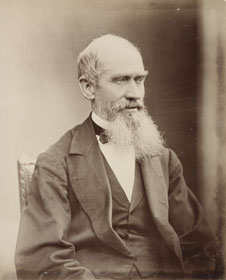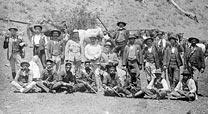Country life
Rural pioneers actively participated in the control and planning of life in the county and took their civic responsibilities very seriously. Sitting on committees, acting as magistrates, church wardens, councillors and even parliamentarians, they helped to shape the development of life in the region.
Both Charles and William Boydell acted as Justices of the Peace. Charles Boydell was also a magistrate and a member of the District Council, and he took an active part in Hunter River Vineyard Association.
The regional newspaper was always the primary means of keeping residents informed and up to date with matters of concern on local, colonial and international levels.
In December 1842, Richard Jones (1816-1892), a trained printer, and Thomas William Tucker, a young reporter on the Sydney Morning Herald, formed a partnership to establish a newspaper at Maitland. The first number of their Maitland Mercury and Hunter River General Advertiser was issued on 7 January 1843. Set up on the eve of the first elections for the NSW Legislative Council, the newspaper soon prospered. By 1848 the Maitland Mercury was described by Governor Fitzroy as 'one of the colony's leading newspapers'.
Hon. Richard Jones, MLA, c.1856
Photograph P1/Jones, Hon. Richard
Richard Jones was actively interested in many local movements including the Maitland School of Arts, the Hunter River Agricultural Society and the Anti-Transportation Committee. He became sole proprietor of the Mercury by 1846, but eventually sold out to Tucker, Cracknell & Falls in 1854. Jones returned to Sydney where he entered politics. In 1862-66 he served on the committee of the Australian Library, later the Public Library of New South Wales.
As a pioneer of the provincial press in New South Wales, Richard Jones proved that with astute management, the Maitland Mercury could be run profitably and benefit its readers. Much of the success of the Mercury sprang from the provocative articles written by Richard Jones himself. Under his editorship, the newspaper became a powerful communication tool dedicated to the development of local resources and to the education of public opinion in the district.



